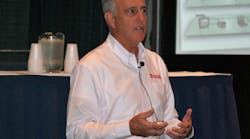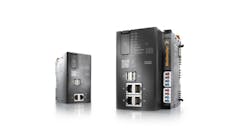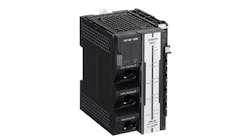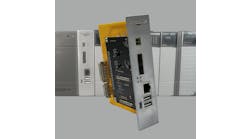“We were able to introduce them to the advantages of PlantPAx—full functionality, objects and faceplates—and the smart water plant.” Rockwell Automation’s Terry Sages explained why the City of Fort Myers, Fla., went with the company’s control systems and motor control centers for a recent wastewater system upgrade.
When the City of Fort Myers, Fla., determined it needed upgrades of the controls and electrical equipment of its two wastewater treatment plants, it discovered novel approaches to project management and system architecture that resulted in cost and time savings, and significantly increased capabilities compared to other modern, but more conventional, approaches.
The Fort Myers Central wastewater plant is rated for 11 million gallons per day (MGD) with 2 MGD non-potable reclaim water and irrigation facilities. The South plant is wastewater-only, rated 12 MGD without reclaim. Together, they serve the City of Fort Myers and much of Lee County, and are staffed 24/7 with a total of 20-25 certified, trained operators, and an annual budget of $4.5-5 million.
The project goal was to upgrade or replace obsolete and aging electrical infrastructure as well as the PLCs, which were variations of SLC 500s and PLC-5s. “There was no documentation—schematics were drawn on the inner walls of the cabinets,” said Jeff Krawczyk, water infrastructure group sales manager, Commerce Controls, Novi, Michigan, which served as system integrator for the upgrades. Krawczyk co-presented at the Water and Wastewater Industry Forum, part of Automation Fair 2019 this week in Chicago.
The project contract was awarded by competitive bid. It was based on an alternate delivery method called construction manager at risk (CMAR), and included a re-electrification project to upgrade or replace motor control centers (MCCs) and variable-frequency drives (VFDs). “Using a construction manager eased owner management and minimized cost,” Krawczyk said. “By showing the client the advantages, we were able to pull the MCCs and VFDs into the system integrator work.”
Rockwell Automation was engaged early on, in the pre-bid stage. “In meetings with the CMAR team and the owner, we were able to introduce them to the advantages of PlantPAx—full functionality, objects and faceplates—and the smart water plant,” said Terry Sages, water/wastewater team lead, Rockwell Automation. “In system architecture discussions, we provided a full and detailed description of the abilities of connected motor control. IT and OT [operational technology] teams were both involved, with CISCO and the staff consulting engineers. Together, they decided to network the centers and drives. The network was tested and operational before we brought it to the plant, and the result was an excellent factory acceptance test (FAT).”
The team also decided on an all Rockwell Automation system due to ease of programming and deployment. Commerce Controls procured the software, PLCs, MCCs and VFDs, and worked with the owners on the graphical presentations. Throughout the course of the graphical workshops, they used PlantPAx graphics that were modified with color as needed to meet the users’ preferences.
The FAT was done at Commerce Controls in Novi, Michigan, where the panels were assembled, the drives were connected and a fiber optic ring was installed. “It involved 140 vertical sections for the two facilities,” Krawczyk said. “Between the two facilities, we built 15 control panels, with one in each facility used for redundancy. There are 21 client SCADA workstations, and a total of about 225 analog points, and 500 digital points.” On the SCADA HMI, users can click on a server to bring up system health, I/O memory in use, primary server status, and which controllers are connected. Dual redundant fiber optic Ethernet rings run through the plants, as “network segmentation and communication response time are very important,” he added.
While the project is still in the commissioning phase due to an equipment delay on a previous project, Krawczyk was able to identify benefits to the approach, methodology and technology. “We’re still in commissioning, but the benefits so far include the integrated architecture approach—rather than using Excel spreadsheets, where misplacing one bit can throw you off.
“They’re making some changes on the fly to the 65 MCCs and 25 VFDs, with Rockwell Automation’s help, and we see 30% savings in commissioning time. The FATs reduced risk in the field—the plants are one-half to a mile long, and it’s hard to get around to test in the field.”
The lessons Commerce Controls learned from the project are that “MCCs can have extended lead times, and they’re shipped on pallets that are about 18 inches wider than they are, so our cables were 18 inches short. Rockwell Automation was able to quickly ship us longer cables,” Krawczyk said. “Specifications called for operating systems on the thin clients, but we were able to pull what we needed directly from the server. And we originally went with Studio 5000 v24, but decided to upgrade before the FAT to get higher levels of cybersecurity.”
The editors of Control are on-site at Automation Fair 2019 to bring you breaking news, innovations and insights from the event. Once the event is over, they will put together a report featuring the top news. Pre-order your copy today.






